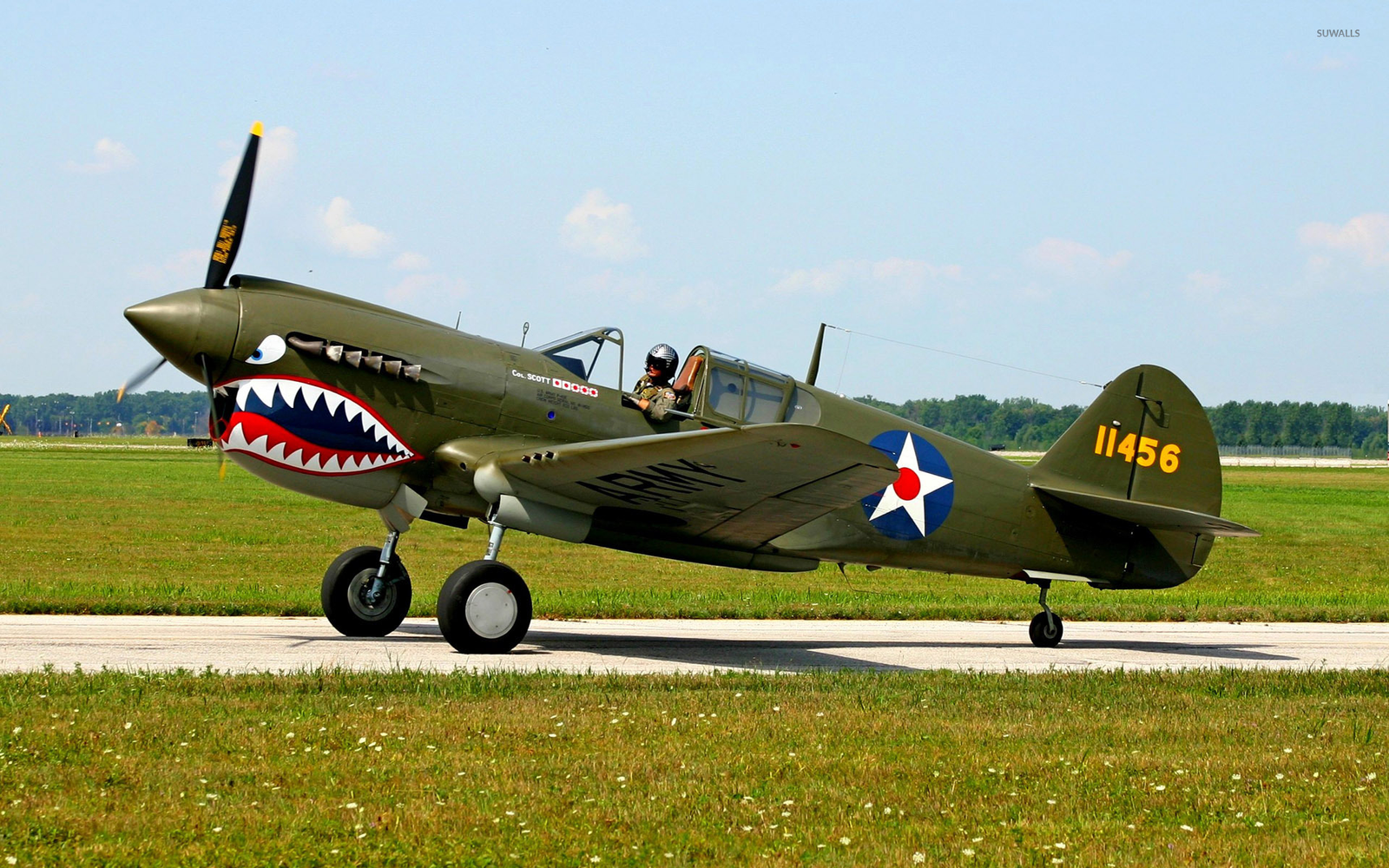
The Curtiss P-40 Warhawk remains one of World War II’s most iconic and storied fighter planes, forever linked to the devastating attack on Pearl Harbor and the early battles in the Pacific. Known for its fierce shark-mouth nose art and sturdy build, the P-40 became a symbol of American grit and resilience when faced with overwhelming adversity.

Early on the morning of December 7, 1941, with the sun rising over Oahu, the U.S. Army Air Corps boasted a formidable array of pursuit planes spread throughout the island. These comprised 64 Curtiss P-40B and P-40C Tomahawks, 20 P-36 Hawks, and 10 out-of-date P-26 Peashooters. 94 serviceable fighters were reported near Pearl Harbor that morning by Rear Admiral Samuel Eliot Morison, of which 84 were deemed to be modern and available. However, the Imperial Japanese Navy’s surprise attack caught most on the ground and destroyed or wrecked dozens of planes before they had even taken off. Nevertheless, some P-40s made it into the air and put up a stiff fight.

Second Lieutenants Kenneth Taylor and George Welch of the 47th Pursuit Squadron were among those who excelled during the attack. They were newly relocated to Haleiwa Field to undergo gunnery training when the attack started. As documented by the squadron’s history, Taylor soon won the position of flight commander through his competent flying. That morning, both pilots hurried to their P-40Bs, took off under fire, and engaged the Japanese planes approaching. Their efforts, together with a handful of others, shot down multiple enemy aircraft, providing a rare and courageous resistance amidst the destruction.

The combat history of the P-40 is multifaceted. Fitted with the Allison V-1710 liquid-cooled engine producing more than 1,200 horsepower, the Warhawk was respected for its toughness, rapid diving capabilities, and benign flight manners. Yet it did poorly in high-altitude fights and was regularly outmaneuvered by the highly agile Mitsubishi A6M Zero in close dogfighting. Nevertheless, as noted by legendary test pilot Eric “Winkle” Brown, the Zero’s unparalleled agility came with a cost in structural vulnerability at high speed, while the P-40’s more rugged construction and higher rate of descent allowed experienced pilots to gain a tactical advantage.

Remaining above about 250 miles per hour was essential to survival against the Zero, since the roll and maneuverability of the Japanese fighter diminished at higher speeds. At low to medium altitudes, the strengths of the Warhawk were leveraged to best effect, where, by accounts of pilots flying both the aircraft, it could outperform the legendary P-51 Mustang below 10,000 feet.

A specific P-40B, Bureau Number 41-13297, speaks an exciting history of the Warhawk’s life. Constructed at Curtiss-Wright’s Buffalo, New York facility and handed over to the Army Air Corps in March 1941, it was based at Wheeler Army Airfield on Oahu. Following a wheels-up landing in October 1941, it was being repaired within a hangar when the Japanese attack commenced.

Having weathered the bombing, the plane was brought back into flying shape, only to crash on a training flight in January of 1942, killing its pilot, Lieutenant Kenneth Wayne Sprankle, in a tragic accident. Secreted away for decades, its wreckage was uncovered and painstakingly restored in the late 1980s. Today, this Warhawk is proudly displayed at the American Heritage Museum, standing as a powerful tribute to that “Day of Infamy” and the sacrifices made.

But the P-40’s story doesn’t end at Pearl Harbor. Nearly 14,000 of these fighters were built by 1944, making it one of the most produced American fighter aircraft of the war. Its durability and relatively simple maintenance earned it favor among Allied air forces worldwide.

Most notably, it was the aircraft flown by the American Volunteer Group—the fabled Flying Tigers—who protected China and attacked Japanese troops with great success. Under Claire Chennault’s leadership, pilots, including William Reed, utilized the P-40’s characteristics in their favor, using hit-and-run attacks that took fullest advantage of its firepower and toughness.

The Warhawk’s cultural legacy is still strong today. From its unique shark-mouth nose art to its appearance at museums and airshows, the P-40 remains fascinating. Museums such as the Pearl Harbor Aviation Museum and the American Heritage Museum preserve these planes and their histories. Hangars with still-visible bullet holes from the December 7 attack and restored warbirds such as the “Swamp Ghost” B-17 Flying Fortress teach guests living history lessons. As historian John T. Stemple observed, the P-40B at the American Heritage Museum is not just an airplane—it is a winged tribute to those whose lives were lost in the attack.

Ultimately, the legacy of the Curtiss P-40 Warhawk is one of improvisation, courage, and remembrance. Its part in Pearl Harbor and the war serves as a reminder to us of the value of learning history and respecting those in service. What the P-40 taught us—about its advantages, its limitations, and the valor of its aviators—remains pertinent to anyone wishing to understand the difficulties of air warfare and the unyielding resolve of defense.
